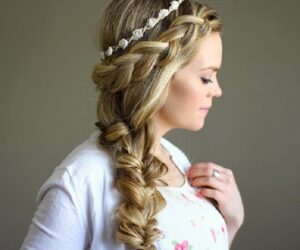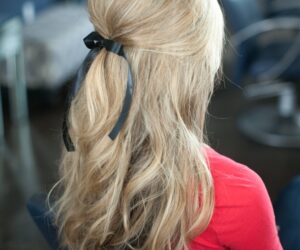Everyone wants a headful of healthy, shiny hair. For women who have unique black hair, it can be a struggle to maintain this type of mane because so many products and styles aren’t formulated for their textures. If you have a curly texture, you probably know that all too well. Luckily, there are several things you can do to make sure your hair is healthy and lovely with no more bad hair days. Here are some quick tips on how to style and care for your black hair:

Experiment With New Hairstyles
Black hair is naturally beautiful and versatile, but sometimes it can get worn out from too much use. If you always wear your hair in a style that requires a lot of manipulation or styling, consider going a few days without relying on heat styling. Try wearing braids, twists, cornrows, or stick-straight styles for a few weeks before jumping back into curling wands and flat irons.
You may be surprised by how different your natural texture looks when it’s allowed to flourish completely free from product and heat damage. If you are into some alternative hairstyles like deadlocks, you might want to take a look for a guide to wick dreads online and you will be surprised by how easy it is to do them. Just make sure you understand how to properly maintain this exciting hairstyle before committing to it.
Deep Condition Regularly
Regularly deep conditioning your hair will help to restore and strengthen strands. This is especially important if you color, exercise, or heat style frequently. It’s best to do a deep conditioning treatment at least once a week, but those with dryer hair may need to condition as often as once a day. Apply the conditioner from root to tip for 5-10 minutes before rinsing thoroughly. You should feel a difference in the softness and smoothness of your hair immediately.
Some of the best ingredients for deeply hydrating dry hair include shea butter, coconut milk, honey, olive oil, and avocado, so make sure you look for those next time you go shopping for a new conditioner.
Go Sulfate-Free
Many shampoos contain sodium lauryl sulfate and ammonium laureth sulfate. These harsh surfactants can strip away natural oils, dry out your scalp and irritate sensitive skin. If you use shampoo regularly, it’s worth investing in one that is formulated for color-treated or curly hair because they tend to be less harsh than drugstore varieties. Look for sulfate-free product lines at salons, beauty supply stores, and online retailers.
Some women have also had great success with homemade shampoo recipes made from gentle ingredients like aloe vera. Just make sure to use a gentle detangler afterward to avoid hair loss.
Don’t Overdo The Heat Styling
Using heat styling tools like flat irons, curling irons and dryers can be easy ways to tame frizz. But these types of appliances are also some of the leading causes of damaged hair. If you must use a heating tool on your hair, make sure you use it sparingly. Limit the number of times you apply them throughout the week.
You should also make sure to apply heat protectant spray to the hair before and after styling with heat. Additionally, try to let your hair dry naturally when you can to avoid unnecessary heat. If you absolutely must blow dry it, use the lowest heat setting possible and a nozzle attachment to direct hot air away from your scalp.
Wash Your Hair Less Often
If you’re washing your hair every day, it’s time to cut back. Not only does shampooing frequently strip the hair of natural oils, but it also causes overproduction of oil on your scalp. If your hair is oily, consider washing it 2-3 times per week instead of daily (unless you work out every day). Washing too frequently can also cause dryness and damage, especially if you use shampoos with harsher sulfates.
If your hair is squeaky clean after shampooing, it’s time to switch products. People with oily hair need a gentle hair cleanser that doesn’t leave their locks stripped of their natural oils.
Give Your Hair A Break From The Brush
Brushing black hair can certainly help to detangle it, but it’s important not to yank or pull on your strands unnecessarily. This can put too much stress on the roots and lead to breakage over time. If you have a habit of brushing your hair while it’s wet, make sure to stop right away because this can cause damage too.
Instead, try using a wide-toothed comb on dry hair or just running your fingers through the strands gently while they’re still moist. Also, if you notice that your brush is catching on tangles after just one pass, it’s time to invest in a new one. Give your hair some TLC by brushing with a soft-bristled brush before styling or after you’ve applied conditioner.

As you can see, caring for black hair is not as complicated as it might seem. With a little extra care, you can have gorgeous natural hair that defies stereotypes and gets you noticed for your style instead of your hair texture. Keep these tips in mind and you’ll be on your way to healthy, radiant locks in no time



